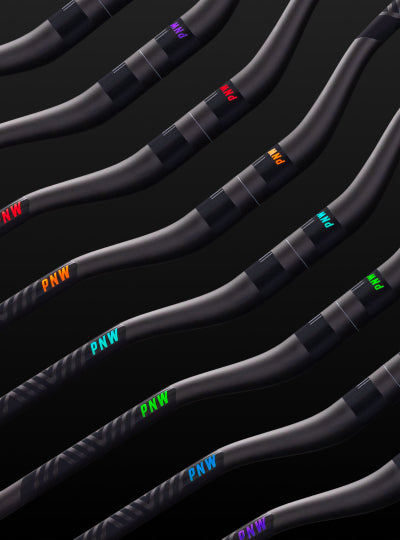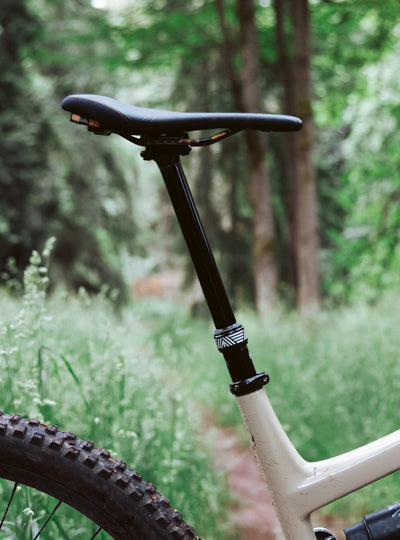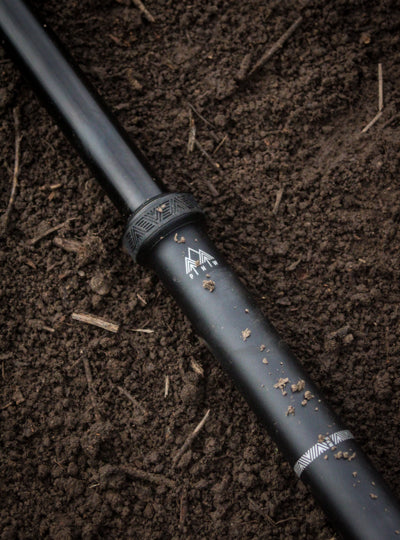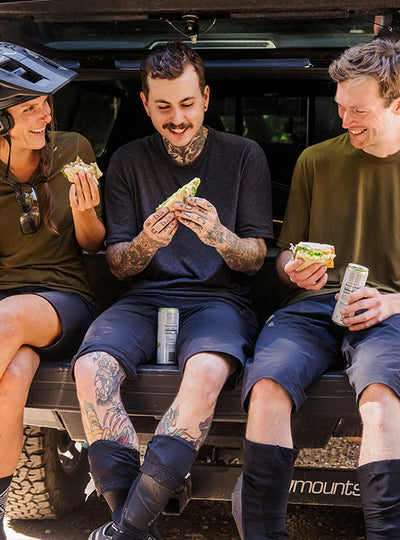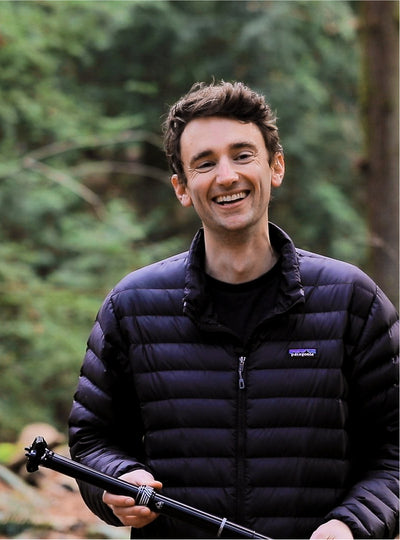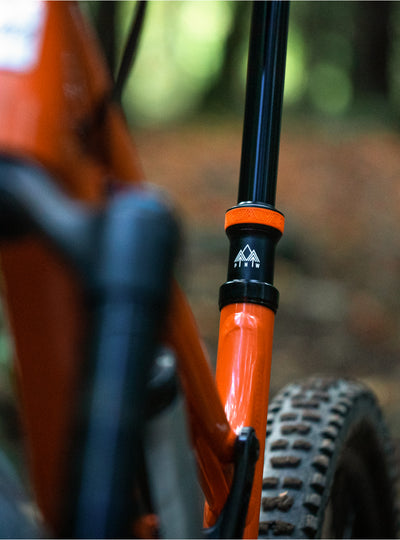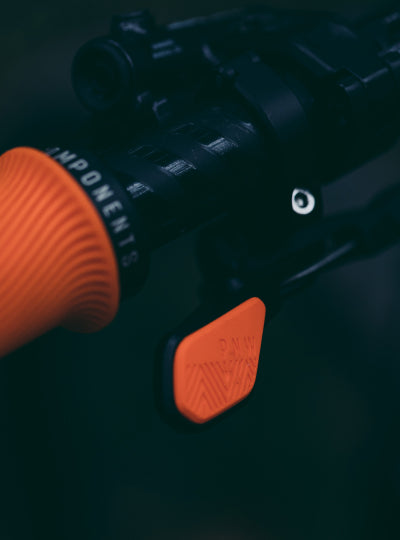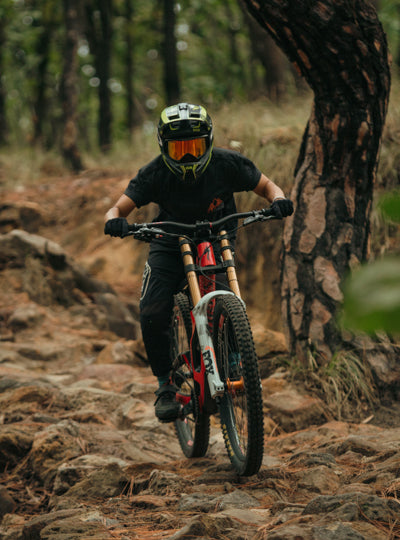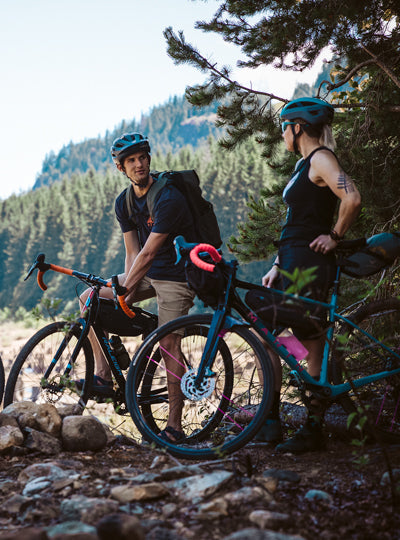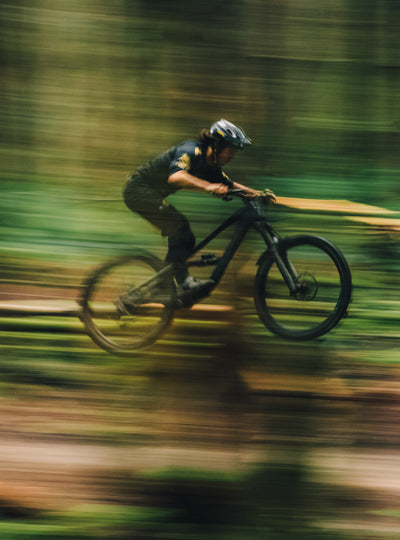Packing and prepping for a bikepacking trip sometimes feels as challenging as the trip itself. To alleviate the anxieties that come with packing, we teamed up with PNW Squad member and experienced bikepacker Delia Massey to provide you with key things you need to pack for a bikepacking trip.
The following article was provided by Delia Massey based on her recent excursion through the Baja California Peninsula.
An Adventure Along the Baja Divide Cape Loop
The Cape Loop section of the Baja Divide is a 320 mile beast of a bikepacking trip and the longest I’ve ever completed. My fiancé, Kinsey, and I spent 13 spectacular days crossing mountain ranges, riding alongside the Pacific Ocean and Sea of Cortez, camping on dreamlike beaches and making irreplaceable memories. Along the way, we became quite proficient at slogging through miles of sand while eating as many fish tacos as possible.

There is an art to packing for a long bikepacking trip and we aimed to conquer the challenge of limited space and minimal weight. In the end, we were happy with what we packed; and, while you could certainly be more minimalistic, we felt we had just enough gear to be comfortable. Here’s the rundown on what we brought with us:
Find the Right Bike
Our goal was to have bikes that were durable, reliable, good in sand, but still fun on singletrack. We both chose steel Kona Honzo hardtails and tried to run the exact same parts so, in theory, it would be easier to find spare parts if something went wrong:
- 27.5 x 2.8” tires (Maxxis Rekon with SilkShield), tubeless, with a little extra sealant in each tire
- SRAM 12-speed drivetrain, with a 30t cog in the front and a 10-50t cassette
- 150mm RockShox Pike/Lyrik so we could really rip on the singletrack bonus rides
- PNW Components Bachelor Dropper Posts for extra fun on the singletrack, with the Wolf Tooth Valais to attach our seatbags
- Revelate Designs bike bags, with a Salsa Anything Cradle to attach our handlebar bags

Adequate Shelter is a Necessity
We used the Hyperlite Mountain Gear Ultamid 2, which is a pyramid-style tent made of lightweight but durable Dyneema, along with a carbon fiber center pole from Ruta Locura. I’ve never lived out of a tent for 12 straight nights, but it was actually pretty comfortable and the tent was spacious enough that we could sit up in it and fit all of our gear. I would recommend bringing a tent and not cowboy camp for a couple of reasons: 1) small but dangerous critters (scorpions, spiders, mosquitoes, and rattlesnakes); 2) it was quite dewy and damp some nights, and 3) protection from the wind, especially along the Sea of Cortez.

Get a Good Night's Sleep
We used our tried and true bikepacking/backpacking sleep setup:
- Enlightened Equipment 30-degree custom down quilts, which are warm and pack down nice and small
- Silk cocoons that keep you from sticking to the quilt when sweaty and covered in sunscreen. They can also be used on their own when it’s hot out
- Thermarest Neoair Xlite sleeping pads, which are lightweight and comfortable

Hydration: It's Kind of Important
Unlike our home in western Washington, there was very limited surface water on the route, and most of it didn’t look potable. We were able to filter and treat water with a Steripen in the mountains only once. Other than that, we bought purified water in towns. We each had the capacity to carry 6L of water, which was sufficient for a maximum of 2 days without resupply on some of the mountain sections. Our setup for carrying water looked like this:
- Two 2.2-L stainless steel bottles attached to fork-mounted King Cage Many Thing Cages with Voile straps
- One 2-L HydraPak Seeker water pouch (with a Katadyn BeFree filter attached) in a Revelate Designs Joey pouch on our downtube
- Two 750-mL water bottles in our Revelate Designs Mountain Feedbags on the handlebars.

What to Wear?
Yes, Baja is a desert so it is hot during the day, but it gets chilly at night. We each had a light synthetic puffy jacket, a rain jacket, a pair of long underwear, and wool socks for warm layers. We rode in the same clothes every day but tried to hand wash our chamois every few days with Dr. Bronner’s soap. Each of us also had a pair of shorts, a t-shirt, long-sleeve hooded base layer, and lightweight sandals for when we were off the bikes. I brought a bikini and a pair of merino wool underwear, too. Bandanas were very useful, as well. We wore everything we brought and had no regrets!

GPS to Find Your Way Around
I used a combination of my Wahoo Elemnt Roam cycling GPS device and Gaia GPS on my phone. For route planning, I downloaded the Baja Divide gpx files from the website and used the Ride With GPS app to plan out our entire loop with campsites, resupply points, and singletrack side adventures. I had great cell service with Google Fi everywhere except the mountains.
Want to see the route Delia and Kinsey took? Click here for their Baja Divide Cape Loop route.

Protect Your Body From the Elements
Every morning we slathered ourselves in SPF 50 sunscreen, and chamois butter which we purchased on Day 2 of the trip from Over the Edge Baja in Todos Santos. We made it through the trip without any sunburns or saddle sores! We also brought toothpaste, deodorant, lotion, and Neosporin.

Don't Forget Your Tools
Baja can be really hard on equipment, so we came prepared. Our bikes were both in great condition at the start, with fresh tires, new cables and housing, which helped reduce mechanical issues. Our repair kit included:
- Small bottle of chain lube
- Lezyne pump, tire levers
- Small bottle of extra sealant
- Upholstery needle and floss to sew sidewall tears
- Tire boots
- Tubes
- Crank Brothers multitool
- Leatherman knife w/ pliers
- Wolf Tooth Pack Pliers
- Extra master links

Gotta Stay Connected
Since we camped the whole time, we used outlets in coffee shops and restaurants whenever possible. We brought an external battery that held 4 charges and a small solar panel. The solar panel was most effective in the middle of the day, so we would set it out during lunch to charge the Wahoo. Two of the items we would consider not bringing in the future were a Bluetooth speaker and our Sony Alpha 6000 camera because we didn’t want to waste any precious power to keep them charged.

The Stuff People Are Hoarding Right Now
Be sure to bring a poo shovel and toilet paper! Trust me, you’ll need it when you’re living off of bags of refried beans and cooked pork. I swear by “The Deuce” shovel because it’s ultralight and you can dig a hole pretty quickly :).
What Not to Bring
And finally, what we didn’t pack: a stove! Many people choose to go stoveless on this route, because it cuts out weight, and it’s hard to find fuel in Baja. We just packed sporks and our titanium mugs and found plenty of things to eat that don't require cooking (tuna tacos, refried bean tacos, oatmeal, cookies, potato chips, nuts, and more cookies) and ate out at restaurants when we were in towns.

Your Turn
Spending 13 days relying on your bike and what it can carry is a rewarding experience, even if it comes with challenges. If you're looking to jump into a similar adventure hopefully my experience can guide you. Take time to enjoy the ride and plan your next escape.





